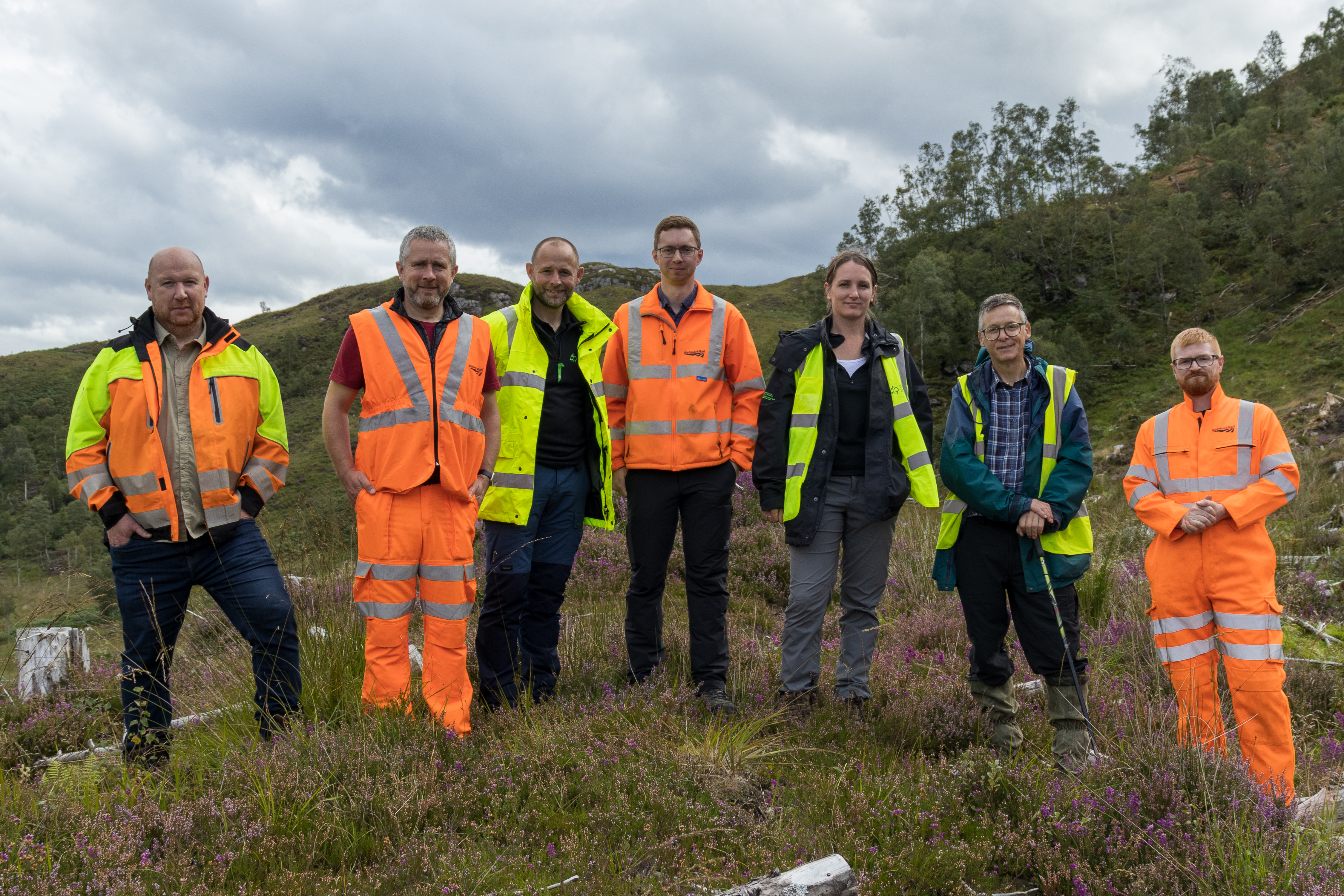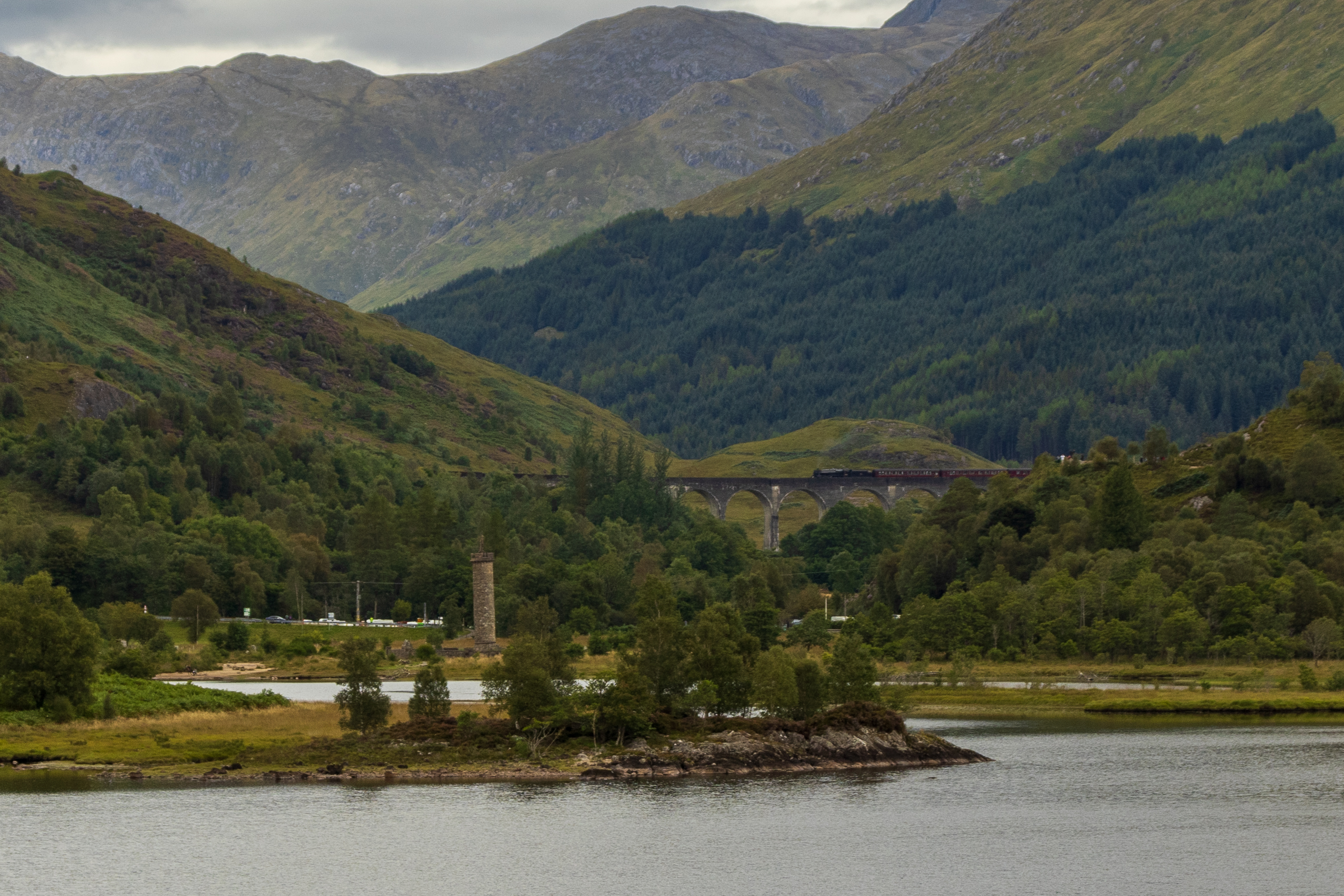
Glenfinnan Habitat Improvement Project
Glenfinnan Habitat Improvement Project
Network Rail Scotland is investing more than £300,000 with Forestry and Land Scotland (FLS) - the Scottish Government agency responsible for managing Scotland's national forests - to complete the most ambitious biodiversity enhancement project that Scotland's Railway has ever undertaken.
The project area sits within Scotland’s endangered Atlantic rainforest zone in the shadow of the iconic Glenfinnan viaduct .
Project overview
This is a pilot project which offers a range of biodiversity enhancement activities near to Glenfinnan, improving and creating habitats over an area of approximately 200 hectares near the Mallaig Line. This will be, the most ambitious biodiversity enhancement project that undertaken by Network Rail in Scotland.
The project will support activity to protect, enhance and expand habitats including nationally and internationally designated sites managed by Forestry and Land Scotland (FLS). The long-term result of this activity is expected to be an uplift in biodiversity across the project area.

Project Timeline
-
January 2023: Phase 1 begins
-
Spring/summer 2023: Phase 1 completed which included: • Removal of non-native regeneration across pinewood and peatland habitats. This includes invasive species which threatens the native habitats and was completed using hand tools/equipment. • Installation of deer fencing to protect and expand oak woodland on the knoll near the railway at Drumferm. This will protect the area from grazing animals and enable young seedlings to establish and help regenerate the old oakwoods. • A survey to scope native woodland expansion at Callop Woods, to determine whether enrichment planting is required to supplement natural regeneration. • Work has now started on the installation of the fenced enclosure to protect areas of new pinewood expansion and existing habitats at Callop woods and is progressing well. Access tracks have been created to assist any establishment planting and future maintenance and wildlife management.
Why?
Why are we doing it?
This pilot project will help contribute to improving biodiversity and the delivery of our sustainability strategy.
The project will help to compensate for biodiversity loss as a consequence of ongoing tree and vegetation management programmes which protect the operational railway line, help to keep passengers safe, trains punctual and reduce the risk for lineside neighbours.
On completion, this project provides a large biodiversity enhancement benefit across 200 hectares, a scale which would be complex and very costly to achieve without impacting on railway operations on Network Rail-owned land. These benefits will help Network Rail to achieve its corporate targets of no net loss in biodiversity by 2024 and Net Gain by 2035.
The project provides a route towards compliance with recommendations of the Varley review, which has been endorsed by Transport Scotland.

What will change?
Outcomes
The project will support activity to protect, enhance and expand habitats including nationally and internationally designated sites managed by FLS.
The first phase of works began in mid-January 2023 and consists of clearing and removing non-native species such as rhododendron regeneration across pinewood and peatland habitats by hand.
Rhododendron and self-seeded non-native conifers are threatening the rainforest and peatland habitats– seeds blow in from neighbouring gardens and plantations and can quickly take over, blocking light, upsetting delicate nutrient and water cycles and changing the ecosystem so it no longer supports the abundance, diversity and rarity of the species found in Scotland’s rainforest make this unique habitat internationally important.
The Network Rail funded activity will help to remove threats to vulnerable and internationally important woodland and peatland habitats. The long-term impacts will be to protect, enhance and expand these unique habitats for generations to come, with benefits for biodiversity, communities, visitors, climate resilience and carbon storage. The longer-term objective is to restore ecosystem processes over 10 years which will support full habitat recovery and ongoing resilience of Scotland’s rainforest.
Moving forward
There is not only scope to protect and enhance these existing priority areas, but also opportunities to expand these woodland and peatland habitats further still to increase resilience and aid recovery of biodiversity.
The longer-term objective is to restore ecosystem processes over 10 years which will support full habitat recovery and ongoing resilience, thanks to these initial interventions funded by Network Rail, plus ongoing management and maintenance undertaken by FLS.

